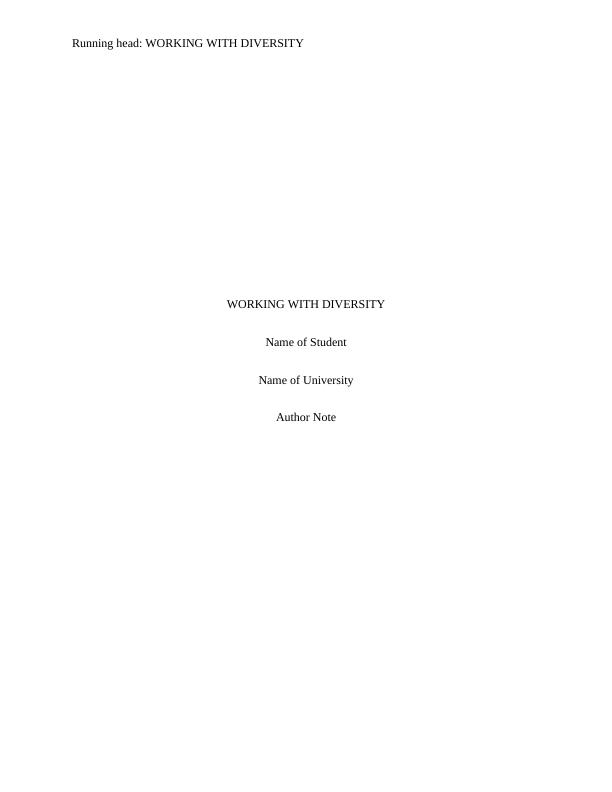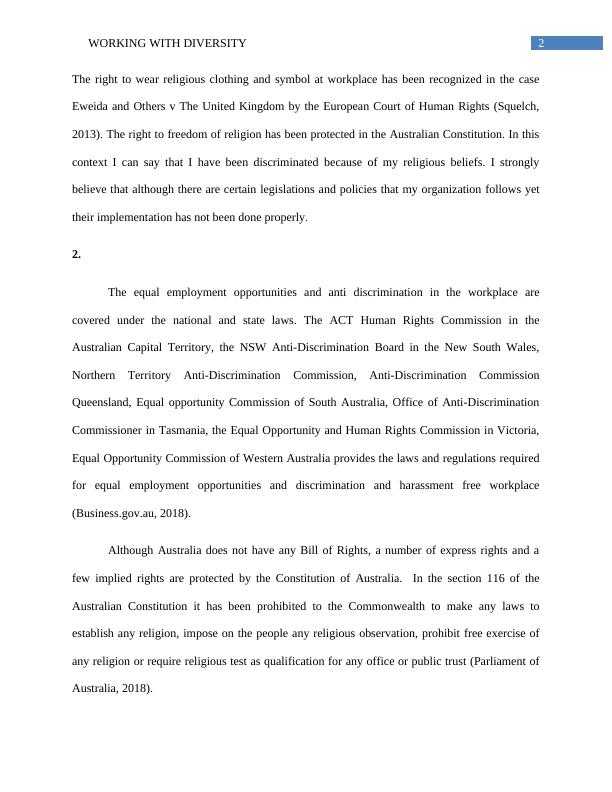Working with Diversity
Identify and analyze evidence of non-inclusiveness in the workplace, investigate relevant Acts/Laws/Procedures, explore rights and expectations, evaluate solutions for non-inclusiveness, suggest future improvements for workplace inclusivity.
6 Pages1304 Words222 Views
Added on 2022-11-28
About This Document
This document discusses the issue of discrimination, specifically religious discrimination, in the workplace. It explores the laws and regulations in Australia that protect equal employment opportunities and prohibit discrimination and harassment. The author shares a personal experience of religious discrimination and highlights the need for proper implementation of company policies and a Religious Discrimination Act. The document concludes with recommendations for creating a more inclusive workplace.
Working with Diversity
Identify and analyze evidence of non-inclusiveness in the workplace, investigate relevant Acts/Laws/Procedures, explore rights and expectations, evaluate solutions for non-inclusiveness, suggest future improvements for workplace inclusivity.
Added on 2022-11-28
ShareRelated Documents
End of preview
Want to access all the pages? Upload your documents or become a member.
Cultural Groups in Australian Workplace
|5
|1422
|206
Working with Diverse and Aboriginal Australians
|10
|1908
|482
Management | All about Sexuality - Study
|6
|2121
|15
Equality at workplace
|6
|1154
|24
Workplace Diversity in Healthcare: Types, Barriers, and Strategies
|8
|1845
|214



